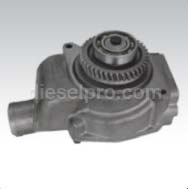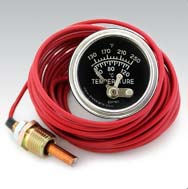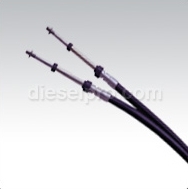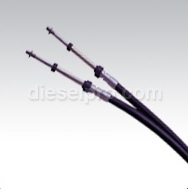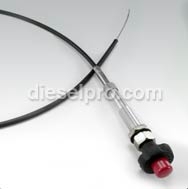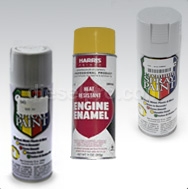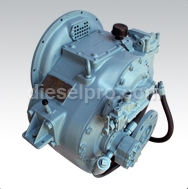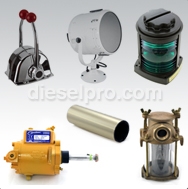The Caterpillar D330 is a legacy diesel engine that played a key role in powering Caterpillar’s early industrial and construction equipment throughout the mid-20th century. It is a 4-cylinder, 4-stroke diesel engine, designed for reliable, mid-range output in tough field conditions. Originally introduced in the late 1950s, the D330 became a foundational engine for Cat’s bulldozers, generators, marine auxiliaries, and oilfield equipment through the 1960s and 1970s. The D330 belongs to a family of engines that includes the D333 (6-cylinder version) and D343 (8-cylinder), sharing similar design features such as direct injection, overhead valves, and mechanical fuel control systems. Despite its age, the D330 is still in operation today in parts of the world where simple, mechanical engines with long service lives are favored over electronically controlled systems. Its mechanical simplicity, rebuildable components, and reputation for reliability continue to make it a preferred platform in legacy equipment restoration and repower markets. Specification Details Engine Configuration Inline 4-cylinder, 4-stroke diesel Displacement 638 cubic inches (10.5 Liters) Bore x Stroke 4.75 in x 6.0 in (121 mm x 152 mm) Aspiration Naturally Aspirated or Turbocharged (model dependent) Compression Ratio ~16:1 (varies by application) Fuel System Direct Injection, Mechanical Fuel Pump Horsepower Rating 125 – 160 HP @ 1,800 – 2,000 RPM Torque Output Up to 470 lb-ft (638 Nm) Emissions Control Pre-regulation (no emissions aftertreatment) Starting System Direct Electric Start or Pony Motor (older units) Cooling System Water-cooled, belt-driven pump Oil Capacity ~5.5 – 6.5 gallons (21 – 25 liters) Dry Weight Approx. 2,400 – 2,800 lbs (1,090 – 1,270 kg) Governing Speed Range 1,200 – 2,000 RPM The Caterpillar D330 served a wide array of heavy-duty industrial applications, especially where ruggedness, mechanical simplicity, and ease of service were valued. From early bulldozers to generator systems and oilfield rigs, the D330 helped power critical infrastructure, especially in remote or harsh environments. Today, it remains in use in restored equipment, vintage machinery, and in field operations where reliability and legacy system compatibility are essential. The D330 was heavily used in Caterpillar’s mid-century construction equipment lineup, delivering the necessary horsepower for earthmoving, grading, and foundation work. Early Cat bulldozers (e.g., D6 series) Motor graders Track-type tractors Cable-operated scrapers Pull-type rippers Its naturally aspirated or turbocharged variants gave operators the flexibility to choose between reliability and added performance, depending on terrain and jobsite conditions. The D330 was commonly used in stationary generator sets, particularly in applications where continuous-duty or standby power was required without complex electronic systems. Mobile generator trailers for construction and mining Remote diesel power stations Standby generators for hospitals, schools, and municipal utilities Backup systems in telecom and water treatment facilities Because of its mechanical fuel system and easy-to-maintain cooling circuit, it became especially valuable in regions with limited access to advanced diagnostics or emissions infrastructure. In the oil and gas industry, the D330 found its way into early mobile oilfield equipment, including mechanical drive systems and support modules. Skid-mounted mechanical drive engines Mud pumps and rotary drill motors Early nitrogen pump units and fracturing support systems Hydraulic power units for rigs Its torque-rich performance and ability to operate in dusty, high-load environments made it suitable for field use, especially in shale plays and remote basins during early North American exploration. Although not widely used in propulsion, the D330 was adopted in certain marine auxiliary roles as well as in stationary industrial platforms. Marine gensets and bilge pump drives Air compressor engines Water pump engines for flood control Conveyors, crushers, and industrial mixers Off-grid irrigation and utility pump systems Its basic mechanical design allows it to operate reliably in salt-heavy air or high-moisture environments, often found in dockyards, inland waterways, and agriculture sectors. Today, the Caterpillar D330 is in high demand among vintage equipment restorers, historical operations, and repower specialists looking to preserve or revitalize pre-electronic machinery. Museum equipment restoration Agricultural heritage farms Repowering early dozers and graders Collector-owned working machines Global resale in regions without Tier 4 mandates Its serviceability without modern diagnostics, long production history, and availability of rebuild components continue to make it a viable engine for continued use decades after production ended. The Caterpillar D330 stands as a testament to mid-century diesel engineering—rugged, mechanical, and built for long-term, hard-duty use. Its footprint in early construction, generator, and oilfield equipment is still visible in many corners of the world, particularly where durability and simplicity outweigh technological complexity. Whether it's powering a vintage bulldozer, running a legacy genset in a remote village, or being rebuilt for historical preservation, the D330 remains a trusted diesel engine that continues to deliver value well beyond its original service life.
Parts for Caterpillar D 330
-
Select Parts Category
 Loading...
Loading... Engine Specifications & Applications of the Caterpillar D330 Engine
Overview of the Caterpillar D330
Caterpillar D330 Engine Specifications
Applications of the Caterpillar D330 Engine
1. Construction Equipment
Notable Equipment:
2. Power Generation
Generator Use Cases:
3. Oilfield and Drilling Equipment
Oilfield Applications:
4. Marine Auxiliary and Industrial Use
Auxiliary & Industrial Use Cases:
5. Restoration and Legacy Equipment Markets
Modern-Day Use:
Conclusion



 Free US Calls: 1-888-433-4735
Free US Calls: 1-888-433-4735 International: 305-545-5588
International: 305-545-5588






